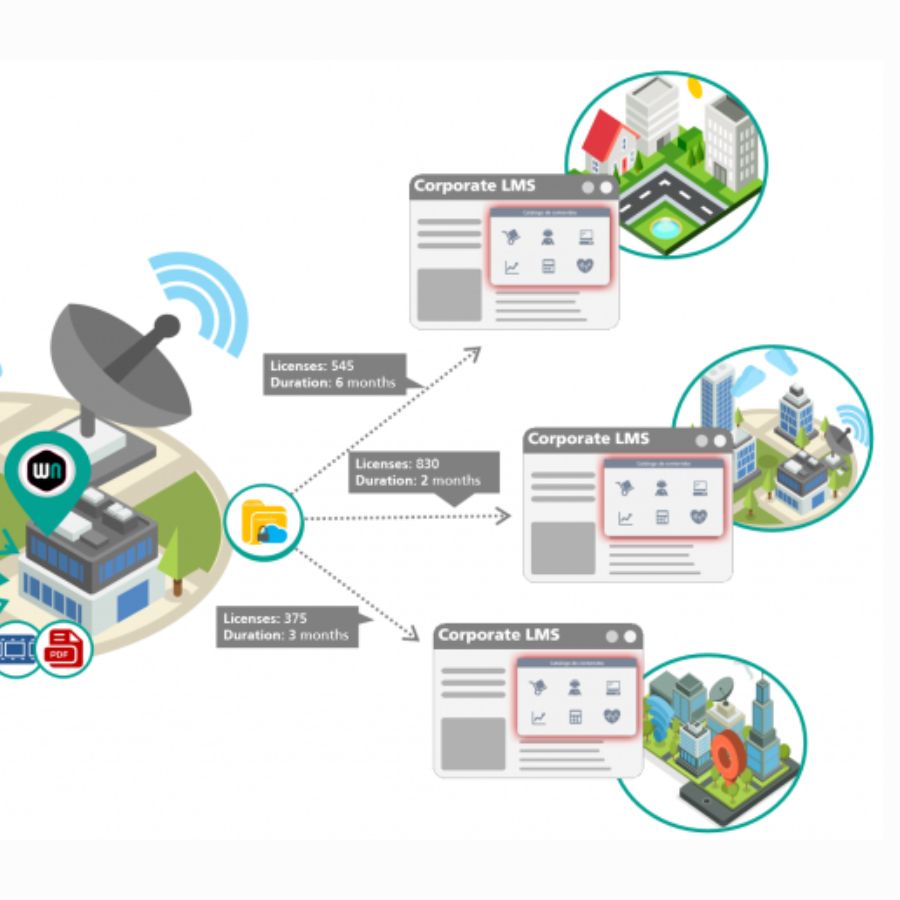Benefits of Gamification in E-learning
As online learning, or e-arling, becomes more important in education, we need to find new and engaging ways to teach students effectively. In this evolving educational landscape, gamification stands out as an essential resource, challenging conventional perceptions of learning and turning knowledge acquisition into a dynamic, participative, and exciting experience. This article explores what gamification in e-learning entails and the benefits it brings to the educational experience, with special attention to its utility in the business sector. What is Gamification in E-learning? Gamification in e-learning represents an educational method that incorporates game dynamics into the learning process. Through this approach, educational concepts are presented in a playful and engaging manner, using game mechanics to motivate students. Instead of merely consuming information, students actively engage in the learning experience, making it participative and exciting. This methodology aims to transform conventional education by adding dynamism and motivation to the process of acquiring new knowledge. Gamification introduces challenges, rewards, and competitions, turning studying into an interactive and entertaining experience. To implement gamification effectively, various tools are available, such as WelcomeLMS. This platform provides gamification features such as a leveling system and experience points that students can earn as they access or complete a lesson, interact in forums or chats, etc. Furthermore, the activities and tests are designed to focus on skill acquisition. Key Benefits of Gamification in E-learning Gamification offers several benefits in e-learning that go beyond the simple introduction of game elements. These aspects radically transform the educational experience, providing tangible results and motivating students in unique ways. Increased engagement Gamification stimulates active student participation. By making learning more fun and engaging, there is deeper engagement with educational material. This playful approach motivates students to proactively involve themselves, fostering a dynamic learning environment. Autonomous learning The introduction of game elements facilitates student autonomy. Students are empowered to make decisions and progress at their own pace, fostering a sense of responsibility and control over their educational process. This autonomy not only strengthens motivation but also contributes to more personalized learning. Immediate Feedback Games often incorporate instant feedback. This feature allows students to quickly understand their mistakes and correct them. Immediate feedback enhances understanding of concepts and promotes active error correction, encouraging knowledge retention. Healthy competition Gamification introduces competition positively, encouraging students to overcome challenges and improve their skills. For example, they can form teams to solve problems or complete virtual tasks. This competition not only helps each student grow but also encourages teamwork to achieve common goals. Leaderboards and public recognition further incentivize them to strive for more, creating a dynamic and healthy learning environment. Improved retention Repetition in games plays a crucial role in strengthening information retention. By exposing students to various concepts in a diverse yet repetitive manner, acquired knowledge is consolidated and reinforced, promoting long-term retention. Collaboration In gamified activities, collaboration becomes a fundamental pillar. For instance, in virtual business simulations, students can form teams to make real-time strategic decisions, requiring effective communication and the combination of individual skills to achieve success. Problem-solving, strategy planning, and negotiation become key skills developed through these gamified interactions. Practical application Games often recreate everyday situations, providing students with the opportunity to apply the knowledge gained during their training in practical scenarios. In a workplace setting, gamification equips students with the tools to confidently and effectively address the challenges of the business world. Stress reduction Gamification has the power to reduce anxiety associated with learning. By making the process more relaxed and entertaining, students can approach challenges with greater confidence and less pressure. Key elements contributing to stress reduction include the introduction of rewards and recognition, reinforcing a sense of achievement and creating a positive environment. Personalized learning Personalized learning translates to the ability to tailor educational paths based on individual skills and preferences. This approach not only improves the relevance of content but also effectively addresses diverse professional development needs. In a business environment, personalized learning paths mean that employees can engage in courses and training modules tailored to their skill level and specific roles. For example, an employee in the sales department may have a learning itinerary focused on sales closing techniques, while someone in the technology department may concentrate on technical skills relevant to their role. Tracking and evaluation Gamification systems allow for continuous and proactive assessment. Data collected over time informs about student performance, revealing learning patterns and areas where the educational strategy can be adjusted. This information is essential for adapting training paths, optimizing content, and ensuring that training aligns with organizational objectives. Conclusion In conclusion, gamification in e-learning not only transforms how students engage with education but also provides effective tools for educators and businesses. By increasing engagement, fostering autonomy, and offering immediate feedback, this methodology positions itself as a stimulant for more effective and motivating learning. Moreover, gamification offers a personalized approach that caters to individual needs. For all these reasons, it stands out as an innovative and effective educational strategy.


